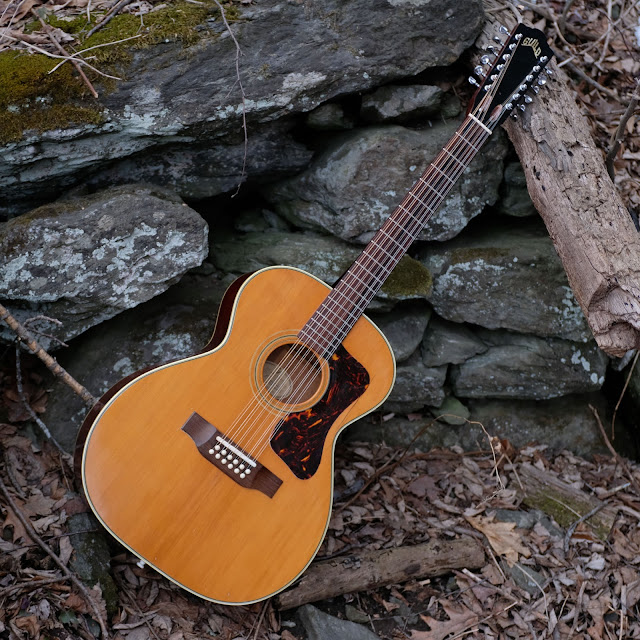1966 Guild F-212 Jumbo 12-String Guitar
A friend of mine owns this guitar and, while I'd never seen it before, he's letting a buddy of his use it for a performance. Said buddy brought it in for a restring and setup and I was pleased to do so -- I've worked on a lot of '70s Guild 12-strings but only one or two '60s Hoboken ones (if memory serves). This one had the distinct benefit of having had work done by someone as obsessive as I am when it comes to intonation issues with 12-strings... it came-in with an "aftermarket," oversize, fully-compensated bridge already in-place. How about that?
Aside from restringing with my favorite gauges (22w/46w, 16/36w, 12/26w, 8/18w, 14/14, 10/10) which give the feel of playing an electric 12-string in standard tuning, I also string-ramped behind the saddle and adjusted the pin-holes during setup, too. Said ramps give better back-angle despite the far-to-the-rear pin-hole locations and thus better tone and power even with the lighter-than-average gauges. It's all win-win... this guitar sounds full and delightful.
Specs are: 25 1/2" scale length, 15 3/4" lower bout and 11 1/2" upper bout, 4 13/16" depth at the endblock, 1 7/8" nut with 1 11/16" string spacing at the nut and 2 1/2" spacing at the bridge. Action is spot-on at 3/32" EA and 1/16" DGBE at the 12th fret. The neck is pretty comfy, with a shallow C-shaped profile to the rear.
Like other F-212s, it's a spruce-over-mahogany guitar with a "jumbo" body shape (that's a bit more 000-shaped in this era) and features the usual Guild double-truss-rod install because it's a 12-string. It also has the usual Guild feature of a hairline crack on the back of the neck that's due to the truss-rod channels nearer the edge of the neck. It's no worry, though -- and the guitar is, actually, in really dang-good shape for its age.














Comments
non-resonator acoustic guitar. I've been keeping mine in a double drop "D" tuning.